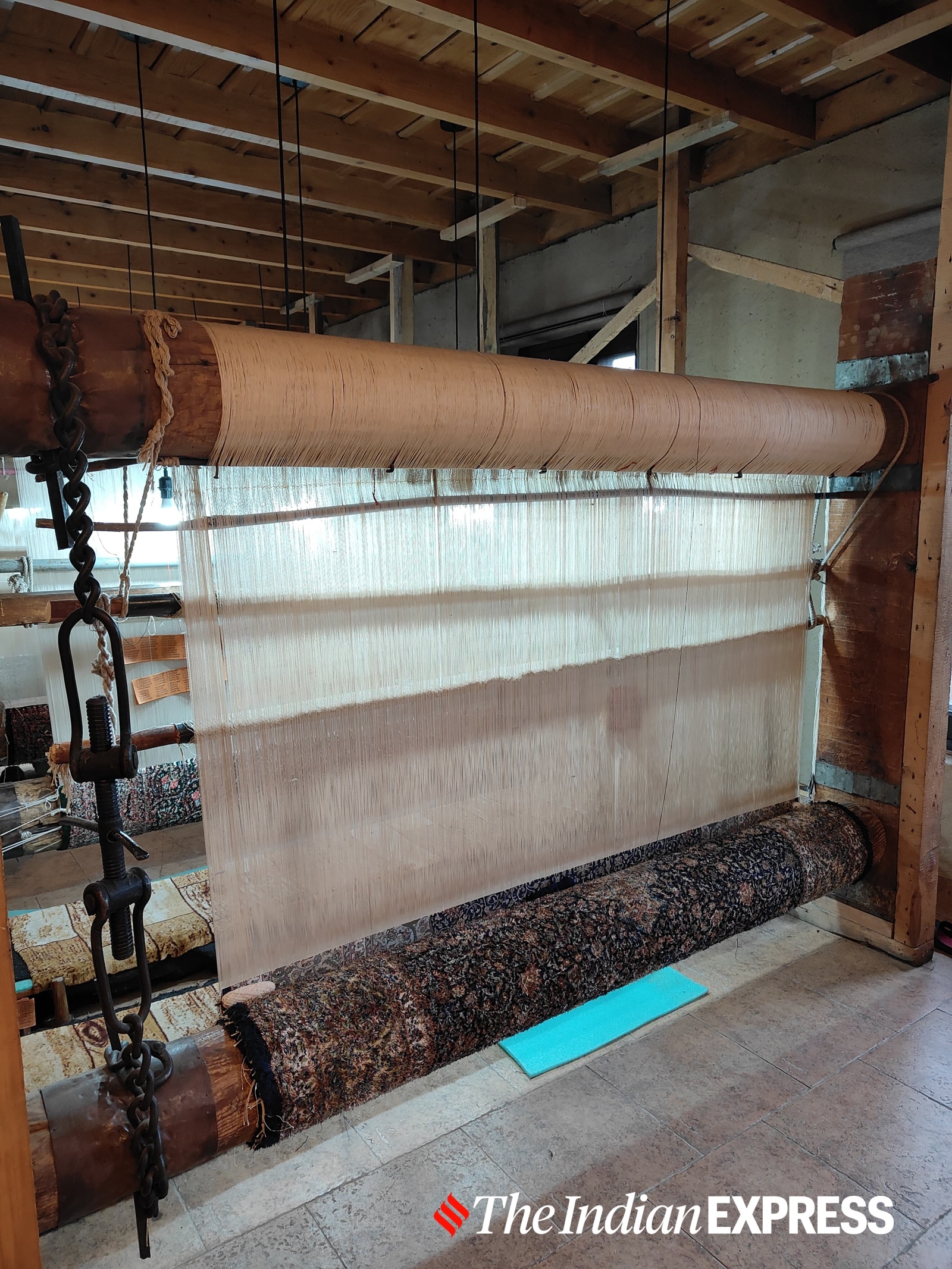When we think of Kashmir, we picture snow-capped mountains, lush apple orchards, rosy-hued cherry blossoms, and fragrant saffron strands. For art lovers, the region is equally famed for its soft and luxurious Pashmina shawls—gifts from a place often referred to as the “Paradise on Earth”. But amid the din and noise of these popular tourist favourites, the lesser-known Kani embroidery, an exquisite textile tradition, ends up losing its much-deserved spotlight.
Once sought after by European aristocrats in the 19th century, Kani shawls were prized for their intricate craftsmanship and use of pure pashmina yarn. Today, they enjoy the protection of a Geographical Indication (GI) tag, granted in 2008, helping preserve their authenticity against rising imitations.
Dr Adity Saxena, dean of the School of Arts and Design at Woxsen University, said that Kani embroidery originates from the village of Kanihama in Jammu and Kashmir. “The craft dates back to the Mughal era, with Emperor Akbar among its most notable patrons. He cherished Kani shawls deeply and even mentioned them in the Ain-i-Akbari,” she said.
Historical records suggest that Kani weaving was influenced by Persian techniques, which were brought to the region by the 14th-century Sufi poet Shah-e-Hamdan. Tied closely to nobility and royal heritage, the craft holds deep cultural and historical value.
 Pure pashmina wool from the Changthang region of Ladakh is commonly used for weaving. (Photo credit: Ishika Roy)
Pure pashmina wool from the Changthang region of Ladakh is commonly used for weaving. (Photo credit: Ishika Roy)
At the Artisane store in Srinagar, indianexpress.com learnt how weaving a pashmina shawl involves processes passed down through generations. Artisans known as Wovur use a method called Wonun in Kashmiri, working the loom by hand and foot simultaneously. It takes three to four days to weave a single piece, with around 1,200 threads stretched across 10 metres to form the warp.
Unlike regular pashmina shawls, Kani pieces are woven not with a shuttle, but with small wooden bobbins or needles—known as kanis.
Rashmi Sridhara, assistant professor of fashion and apparel design at MIT World Peace University, said that the word Kani means “small wooden sticks” in Kashmiri. “It isn’t embroidery in the traditional sense but is woven using fine pashmina yarn and Kanis that guide the warp and weft. The patterns are based on coded designs called Talim, which guide the weaver thread by thread, creating motifs like paisleys, florals, chinar leaves etc,” she said. Each shawl can take several months or several years to complete, depending on how complex or intricate the design is.
Story continues below this ad
Dr Saxena concurred, adding that the weaving is done using the Twill Tapestry Weave technique, where interlocking wefts form the motifs without running across the entire fabric width. This technique gives Kani shawls their signature detailed patterns and soft texture. Pure pashmina wool from the Changthang region of Ladakh is commonly used for weaving.
 Weaving is done using the Twill Tapestry Weave technique (Photo credit: Ishika Roy)
Weaving is done using the Twill Tapestry Weave technique (Photo credit: Ishika Roy)
Types of Kani
Dr Saxena shared some insights on different kinds of Kani shawls, categorised on the basis of their designs and weaving techniques.
Doranga-Dorukhi: Double-sided shawls with different designs on each side.
Aksi: Features a reflection pattern, with one side showing the design and the other left plain or minimally adorned.
Hashiadaar Shawl: Narrow running borders on all four sides.
Palladaar: Features intricate patterns only on the two ends with narrow borders.
Story continues below this ad
Butidaar: Characterised by small or large butis (individual motifs) placed repetitively.
Jamawar: An all-over, densely filled design, originally used as fabric for garments.
Chand-daar: Features a central medallion with four quarter medallions on the corners.
To ensure longevity, Sridhara suggested storing Kani shawls in muslin cloth, away from direct sunlight and moisture. Regular airing and avoiding mothballs will help preserve the fabric’s delicate texture.
Story continues below this ad
What’s in store for Kani’s future?
Despite a glorious start and luxurious patronage, this Kashmiri art industry faces significant challenges marked by a sharp decline in skilled artisans, high production costs, and competition from machine-made imitations which have made the craft less sustainable. Artisane employees revealed that younger generations of artisans are choosing other professions, putting an end to their family legacies.
To keep the tradition alive, designers are adapting Kani to modern tastes—blending it into shrugs, jackets, and stoles to appeal to younger buyers. “Soft palettes, minimal motifs, and fusion wear are drawing attention back to this exquisite art,” said Sridhara.
While modernisation introduces new audiences, the essence of Kani remains rooted in its slow, deliberate craftsmanship—a thread connecting Kashmir’s artistic past to its future.


